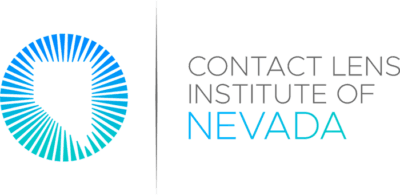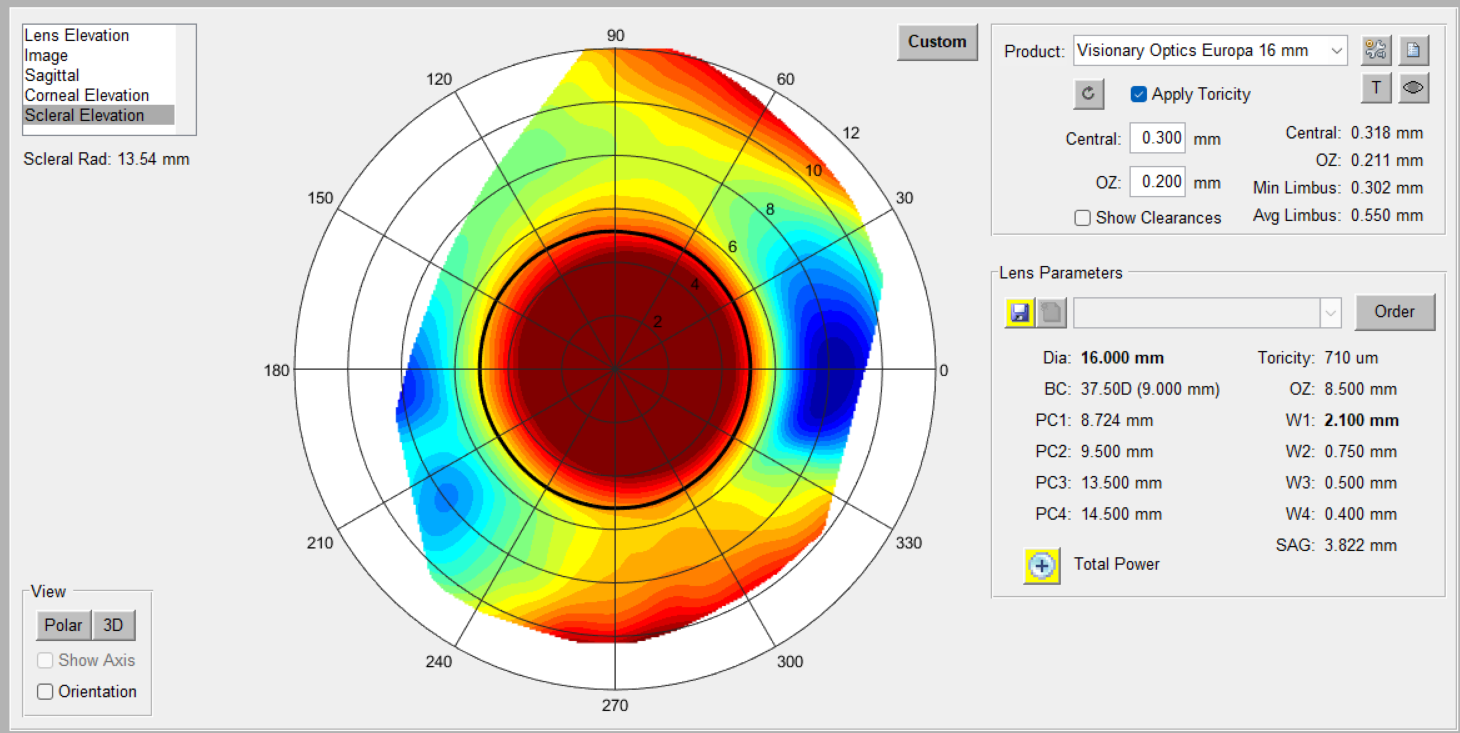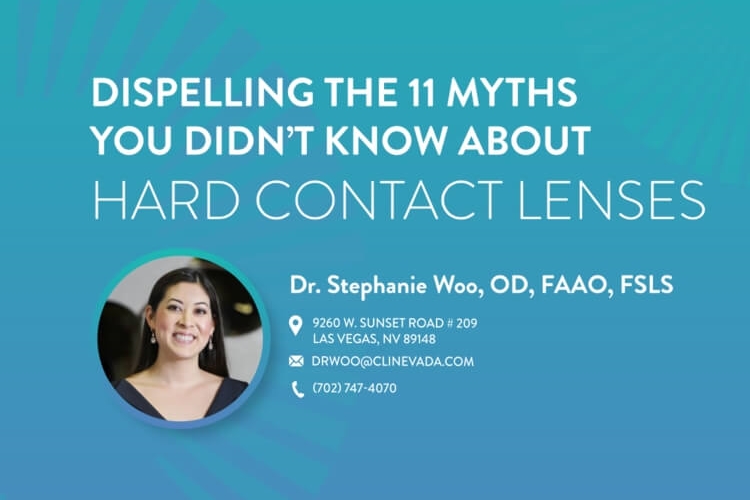Scleral contact lenses are large, hard contact lenses that are designed to rest on the white of the eyes and cover the front of the eye entirely. These lenses are often used when the cornea has some irregularity like keratoconus, pellucid marginal degeneration, or after corneal transplant surgery.
Since the scleral contact lenses are typically used with irregular corneas, these lenses have been made customizable to account for any variation in the shape and contour of the cornea. The factors that can be altered include the center clearance, the limbal clearance, and the edge lift. Scleral contact lenses can also be manufactured with nearly any prescription including nearsightedness, farsightedness, and astigmatism.
What is an Irregular Cornea?
An irregular cornea is any cornea that has an abnormal shape or pattern on the front or back surface. Often, this presents as an area of the cornea that protrudes outwardly more than the rest of the cornea.
Conditions like keratoconus lead to this type of cornea. With keratoconus, the cornea gets steeper inferiorly and forms a cone shape rather than a perfect sphere.
Another common cause of irregular corneas is a cornea that has undergone corneal transplant surgery. This surgery involves using a donor cornea to replace a scarred or damaged cornea. While the surgery can improve the clarity and quality of the cornea, it often leads to irregularities and areas of elevation or depression after the healing process is complete.
How Scleral Lenses Help
Scleral lenses are much different than other contact lenses. Traditional soft contact lenses mold to the shape of the front of the eye and take on any irregularities that are present.
However, scleral contact lenses are large and rigid. These lenses hold their own shape even when placed on the eye.
When scleral contact lenses are on the eye, it creates a new, smooth surface to look through as the lens is perfectly smooth and the tears fill in the area between the scleral lens and the cornea.
Scleral lenses can provide much better vision than glasses or soft contact lenses by helping to eliminate the distortion that is caused by the irregular cornea.
Customizable Scleral Contact Lens
When fitting a scleral contact lens, a trial lens is often placed on the eye in the office based on measurements from the eyes.
This lens is evaluated to see how well it fits in different areas of the cornea.
If there is not enough or too much central clearance, limbal clearance, or edge lift these factors can be altered on the scleral lens that is ordered for the patient.
"Dr. Woo in Designing a Custom-Made Scleral Lens"
A lovely 80 year old white female was referred to our office for a potential scleral lens fitting from Dr. Wellish from Wellish Vision Institute. She suffers from a superior central corneal scar, which you can see in the photo. The cause is unknown. She also has a PCIOL from cataract surgery.
She complains that the vision in the right eye is "very blurry" and distorted, even with glasses.Her best corrected vision in her right eye is 20/100.Her topography also shows some severe irregularity, which is what is causing her vision to be blurry and distorted.
We took some scleral topography images and also an impression of her eye in our office, which will help us design a custom scleral lens.
With a diagnostic scleral lens (46 D Base Curve, 16.0 diameter, -2.50 power) and an over refraction of -1.75, she was able to achieve 20/20 vision today! She also reported the letters were not distorted and were "very clear."
Our plan is to design a custom scleral lens for her to help her achieve maximum comfort and vision. We will see her in our office for a scleral lens dispense and insertion and removal training.
We are looking forward to helping this patient regain functional vision.
Central Clearance for Scleral Lenses
The central clearance of a scleral contact refers to the amount of space between the lens and the center of the cornea. This is the most important aspect of how well a lens will fit and correct vision.
The lens must vault over the cornea but still sit close enough not to induce movement or blur vision.
Limbal Clearance for Scleral Lenses
Similar to central clearance, limbal clearance refers to the amount of space between the lens and the cornea at the edge of the iris.
This can be adjusted to improve the tear flow beneath the scleral lens and make the lens fit more comfortably.
Edge Lift for Scleral Lenses
The final aspect of a scleral lens that can be changed is the edge lift. This is the angle at which the edge of the lens contacts the eye.
If the angle is too steep, it will cause pressure and pain while if it is too flat, it will lead to the lens fitting poorly.


